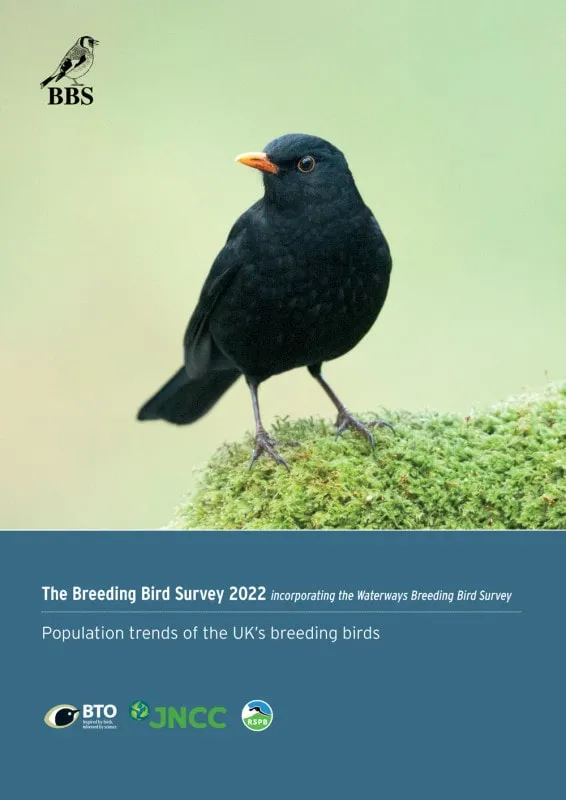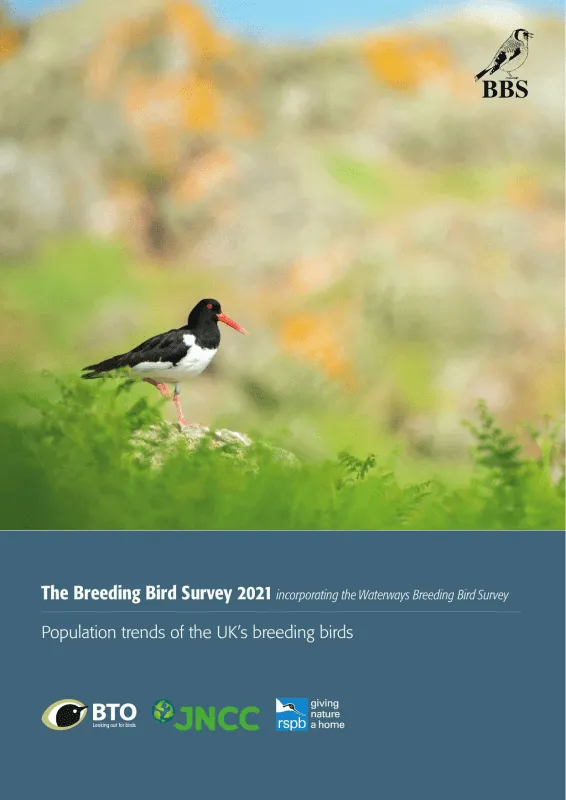The Breeding Bird Survey Report (BBS Report) is published annually and reports on the population tends of the UK's breeding birds.
The Breeding Bird Survey Report is an annual publication containing bird population trends, Official Statistics based on data collected by the BTO/JNCC/RSPB Breeding Bird Survey (BBS), and other results from the scheme.
Since 2016, the Breeding Bird Survey Report has also included population trends of specialist waterbird species, again based on volunteer-collected data from the BTO/JNCC/RSPB Waterways Breeding Bird Survey (WBBS).
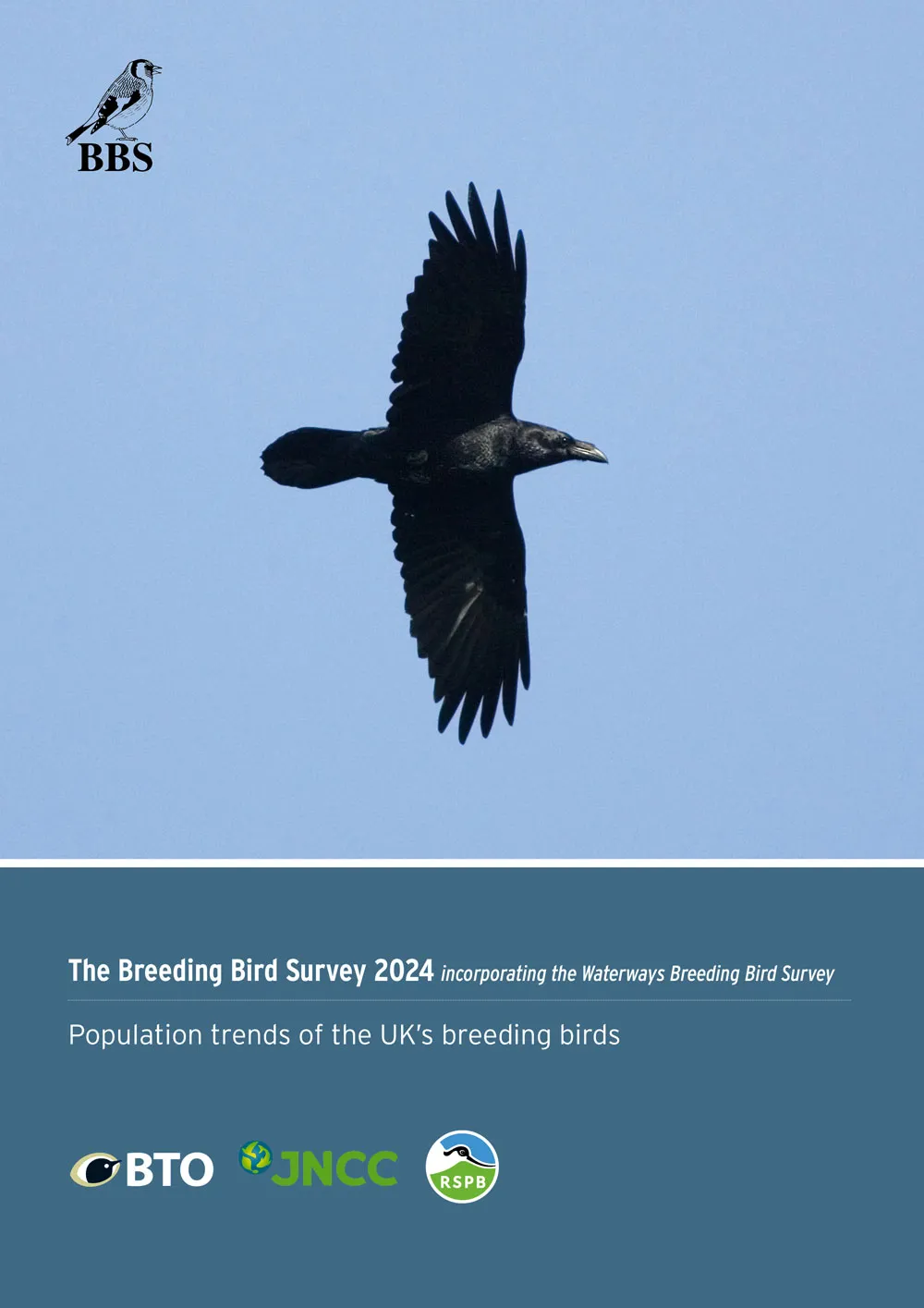
About the Breeding Bird Survey Report
The annual Breeding Bird Survey report is published each year by BTO. It documents the population trends of around 120 UK breeding birds, based on data gathered by volunteers through the BTO/JNCC/RSPB Breeding Bird Survey (BBS). Since 2016, the Breeding Bird Survey Report has also included population trends of specialist waterbird species, again based on volunteer-collected data from the BTO/JNCC/RSPB Waterways Breeding Bird Survey (WBBS).
The report is produced by the BBS National Organiser at BTO, with population trends produced by BTO Data Scientists and Research Ecologists. The population trends and indices in the report are Official Statistics, so follow standards set out in the Code of Practice for Official Statistics. This ensures that published government statistics are high-quality and produced by trustworthy organisations.
Printed copies of the Breeding Bird Survey Report are sent to all BBS volunteers and to a range of conservation practitioners and policymakers.
- To request an additional printed copy, please contact the BBS Organiser at bbs@bto.org.
Digital versions of reports are available to view and download for free.
Information in the report
The population trend information for breeding birds is provided for the UK, England, Scotland, Wales, and Northern Ireland, as well as for English regions. Data collected on the Isle of Man and the Channel Islands contribute towards the UK trends. These trends and indices provide robust evidence on the way that wild bird populations are changing in these regions.
In addition to data and trends about UK breeding birds, the Breeding Bird Survey Report includes:
- Articles by authors from the BBS and WBBS partners (BTO, JNCC and RSPB) about the role of BBS data in conservation, and updates on newly published or ongoing research using BBS data
- An overview of BBS and WBBS methodology and guidelines for interpreting the annual results of the survey
- The results of BBS mammal monitoring and the Wider Countryside Butterfly Survey, optional additional elements of BBS monitoring
- Acknowledgement and thanks to organisations and individuals who have supported the scheme through funding or volunteering
Impact of the Breeding Bird Survey Report
The BBS and the WBBS are the main schemes for monitoring the population changes of the UK’s widespread breeding birds. The results published in the Breeding Bird Survey Report are used widely by Defra and the Statutory Nature Conservation Bodies (SNCBs, e.g. Natural England and NatureScot) to set priorities and to inform conservation action, and as the evidence base against which the UK’s biodiversity targets are measured.
The Breeding Bird Survey Report is just one of many valuable publications produced using BBS data. It sits alongside other regular Official Statistics such as the Wild Bird Indicators, contributions to the Pan-European Common Bird Monitoring Scheme (PECBMS) and the regular Birds of Conservation Concern assessments, which organisations including BTO, JNCC and RSPB use to identify species in rapid decline that need urgent conservation action.
In practice, this means that trends from the Breeding Bird Survey report contribute directly to the conservation and management of our wild bird populations. BBS data are routinely used to assess the effectiveness of agricultural policies designed to benefit wildlife, and in particular, the impact of agri-environment schemes (AES) on breeding birds. More recently the data have also been used to evaluate the benefits of protected areas designated for wildlife, like Sites of Special Scientific Interest (SSSI), Special Protection Areas (SPAs) and Special Areas of Conservation (SACs). Recently, researchers at BTO have also used BBS data to investigate the impacts of climate change on the UK’s birds, and the role of disease in bird population declines.
Further information
Further information, including population trend graphs, is available online for the Breeding Bird Survey and the Waterways Breeding Bird Survey.
Full species-by-species discussion of these results, and of results from other surveys, can be found on BirdFacts.
Latest report
The Breeding Bird Survey Report is available digitally for free, to read and download.
- Download a PDF of the latest Breeding Bird Survey Report.
- Read the latest Breeding Bird Survey Report online in the browser below.
All BBS Reports
- Please note: the date of the Breeding Bird Survey Report refers to the most recent year of data collection, not the year of publication.
Search
The Breeding Bird Survey 2024
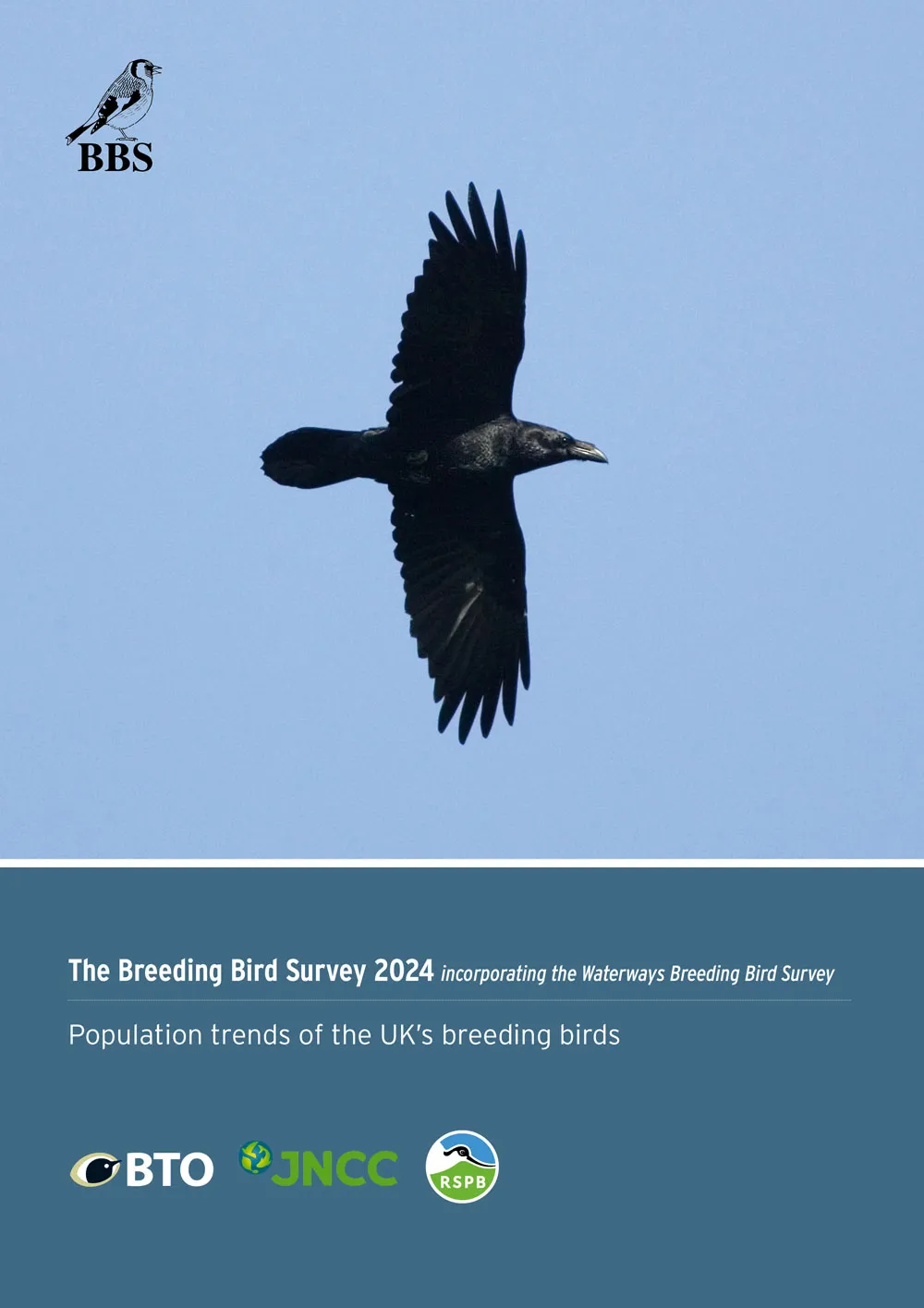
These are the main schemes for monitoring the population changes of the UK’s widespread breeding birds, providing an important indicator of the health of the countryside.The results are published annually as Official Statistics and used widely by Defra and the Statutory Nature Conservation Bodies (SNCBs, e.g. Natural England and NatureScot) to set priorities and to inform conservation action, and as the evidence base against which the UK’s biodiversity targets are measured.BBS data are also routinely used in research, with recent examples including peer-reviewed papers published in 2022 and 2024 which measured the efficacy of the UK’s network of protected areas in supporting wildlife.The 2024 Breeding Bird Survey Report highlights the continuing decline of some farmland species and more recent declines of woodland birds, at least in England. In Scotland, there is a focus on upland birds, where an all-species indicator using BBS data shows a 20% decline since 1994. In Wales, there are mixed fortunes, with species like House Sparrow bucking the downward trend seen in England, whilst Curlew are in severe decline, as they are elsewhere in the UK. Some songbirds in Northern Ireland, such as Blackbird are doing comparatively well compared to the wider UK trend.We thank nearly 3,000 skilled and dedicated volunteers who give their time to BBS and WBBS and make the monitoring of the UK’s breeding birds possible.Download the 2024 reportOr, browse all editions of the Breeding Bird Survey Report >
15.05.25
Reports
The Breeding Bird Survey 2023
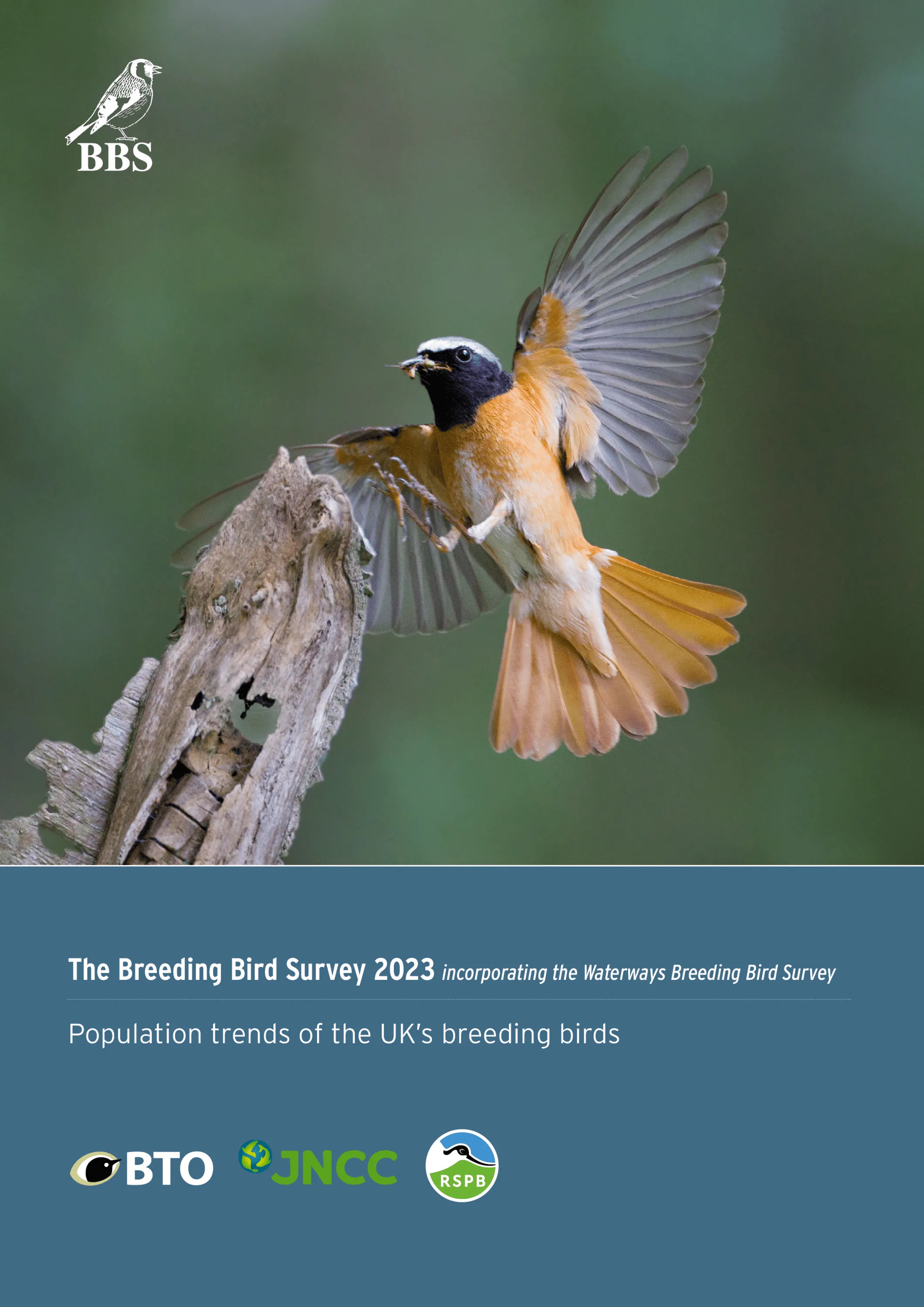
This is the 29th annual report of the BTO/JNCC/RSPB Breeding Bird Survey (BBS) and Waterways Breeding Bird Survey (WBBS), documenting the population trends of widespread UK breeding bird species during the periods 1994–2023 and 1998–2023 respectively.These are the main schemes for monitoring the population changes of the UK’s widespread breeding birds, providing an important indicator of the health of the countryside.The results are published annually as Official Statistics and used widely by Defra and the Statutory Nature Conservation Bodies (SNCBs, e.g. Natural England and NatureScot) to set priorities and to inform conservation action, and as the evidence base against which the UK’s biodiversity targets are measured.BBS data are also routinely used in research, with recent examples including peer-reviewed papers published in 2022 and 2024 which measured the efficacy of the UK’s network of protected areas in supporting wildlife.The 2023 Breeding Bird Survey Report celebrates the 30-year anniversary of fieldwork for the scheme, in particular the amazing commitment and dedication of its volunteers.It is a mixed picture for birds: Swift and Swallow show widespread decline, whereas some species are faring better, particularly in Scotland where species of scrub and woodland are doing better than in England.Download the 2023 report >Browse all editions of the Breeding Bird Survey Report >Press releasesUKNorthern IrelandScotlandWales
16.05.24
Reports
The Breeding Bird Survey 2020
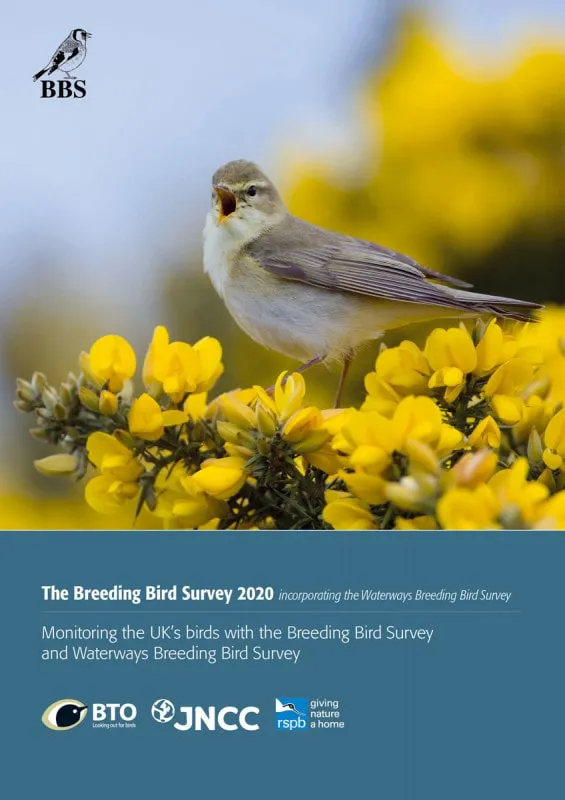
Despite limited 2020 data due to COVID-19 restrictions, the latest BTO/RSPB/JNCC Breeding Bird Survey report reveals interesting trends.
13.05.21
Reports
The Breeding Bird Survey 2019
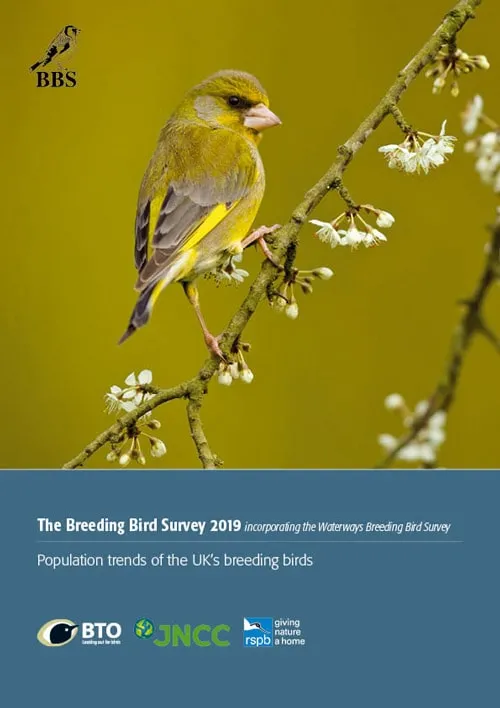
This is the twenty-fifth annual report of the BTO/JNCC/RSPB Breeding Bird Survey (BBS), documenting the population trends of widespread UK breeding bird species during the period 1994–2019.
07.05.20
Reports
